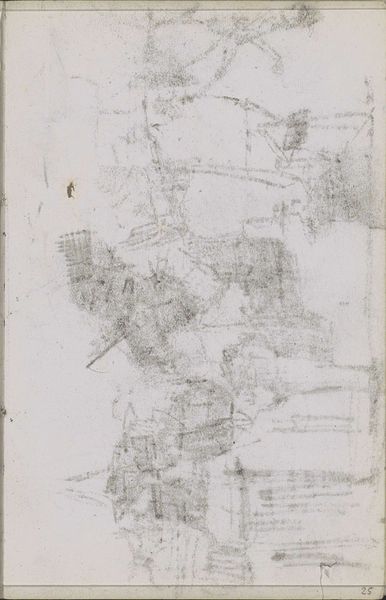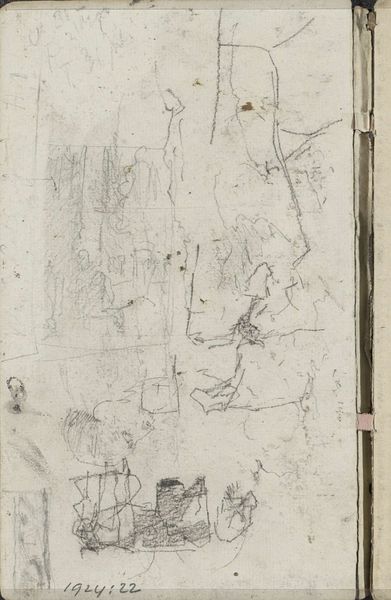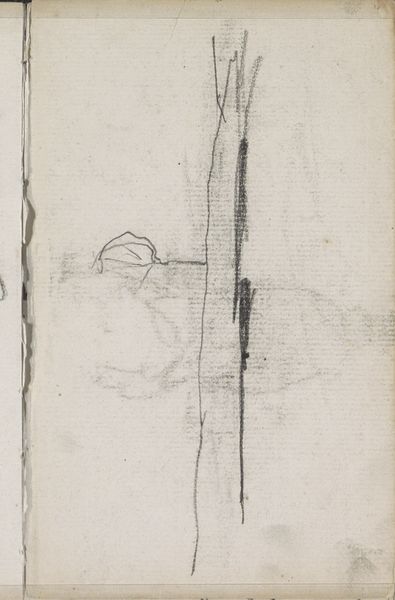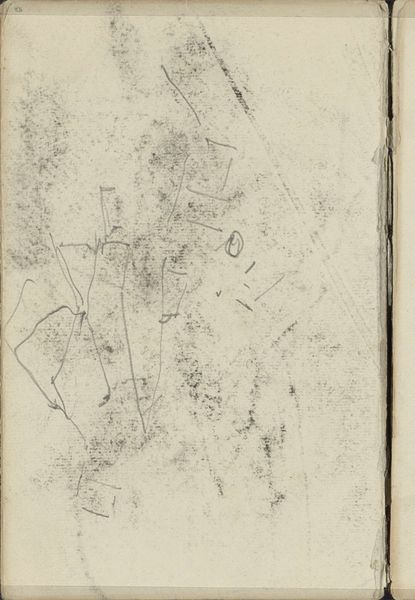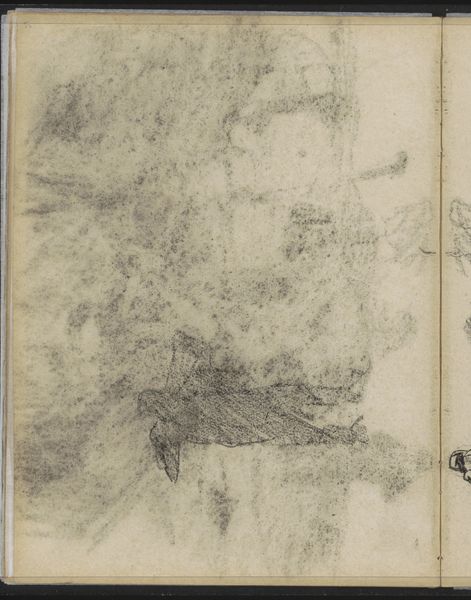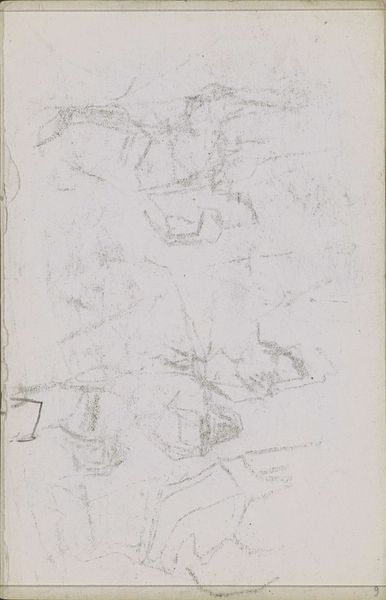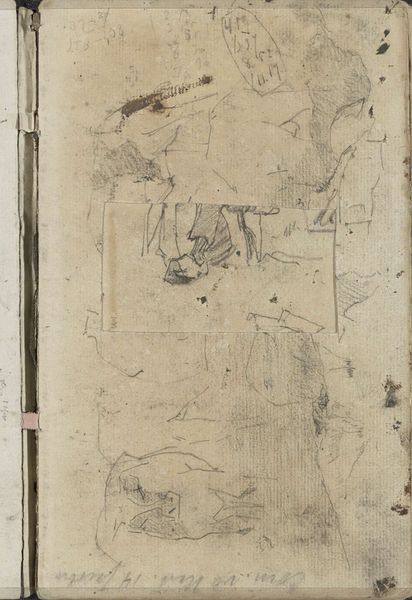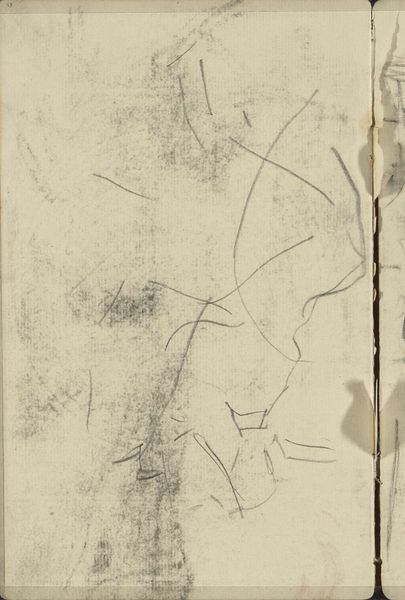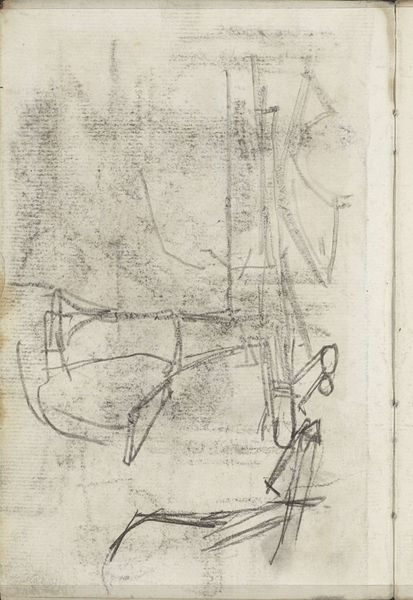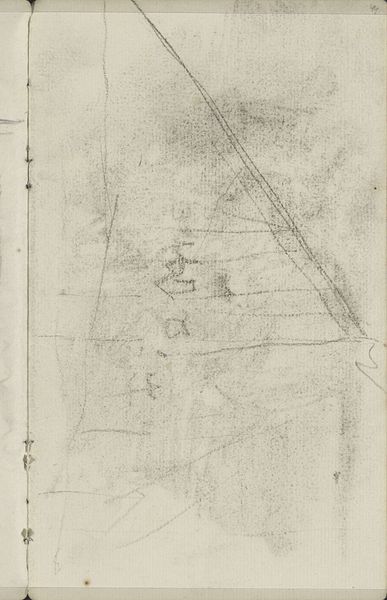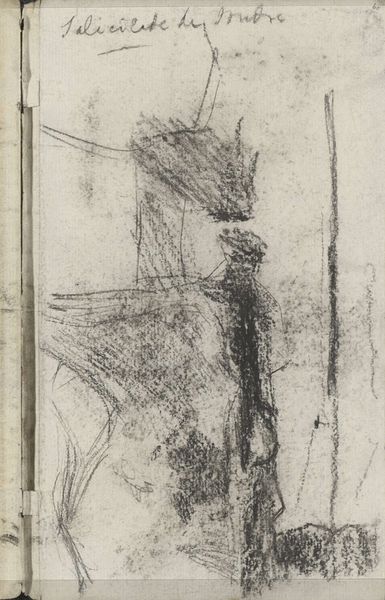
drawing, paper, graphite
#
portrait
#
drawing
#
impressionism
#
figuration
#
paper
#
coloured pencil
#
graphite
#
watercolor
Copyright: Rijks Museum: Open Domain
Editor: This is George Hendrik Breitner's "Figuurstudie," dating from around 1883 to 1885. It’s a drawing done with graphite, coloured pencil and watercolor on paper and currently at the Rijksmuseum. The initial sketchiness gives it a raw, immediate feel, like a fleeting glimpse. What can you tell me about this piece? Curator: This drawing exemplifies Breitner's commitment to capturing everyday life in Amsterdam. Consider the context: Breitner positioned himself against the idealized romanticism prevalent at the time, instead choosing to depict the city's gritty realities. This figure study, though seemingly informal, is a conscious move towards representing the modern experience. What do you notice about the subject’s pose? Editor: It feels unfinished, very informal. Almost like a candid snapshot of someone caught unaware. Curator: Precisely. This “snapshot” aesthetic reflects the growing influence of photography on art. Photography, as a relatively new medium, provided a seemingly objective record of reality. Artists like Breitner embraced this aesthetic to challenge academic conventions and to portray authentic, unvarnished scenes. How do you think the rapid sketch style impacts its message? Editor: It makes it feel more real, I guess. Like a moment captured rather than constructed. Curator: Exactly. By using such a style, he democratizes the artistic process, suggesting that beauty can be found not just in grand, idealized subjects but in everyday moments and ordinary people. It is an intentional push back against what art was *supposed* to be during that period. Editor: That’s interesting. So, this quick sketch isn't just a quick sketch. It’s a statement? Curator: Yes. And also think of museums acquiring artworks like this. They are deliberately broadening notions of "high art," giving Breitner a platform and validating his choices. What do you think about it now? Editor: I see it as more than just a sketch; it reflects broader societal shifts in art and the democratization of artistic subjects. I now see it less about capturing a likeness, and more about challenging ideas and institutions. Curator: It's a fascinating look into a transformative period.
Comments
No comments
Be the first to comment and join the conversation on the ultimate creative platform.
